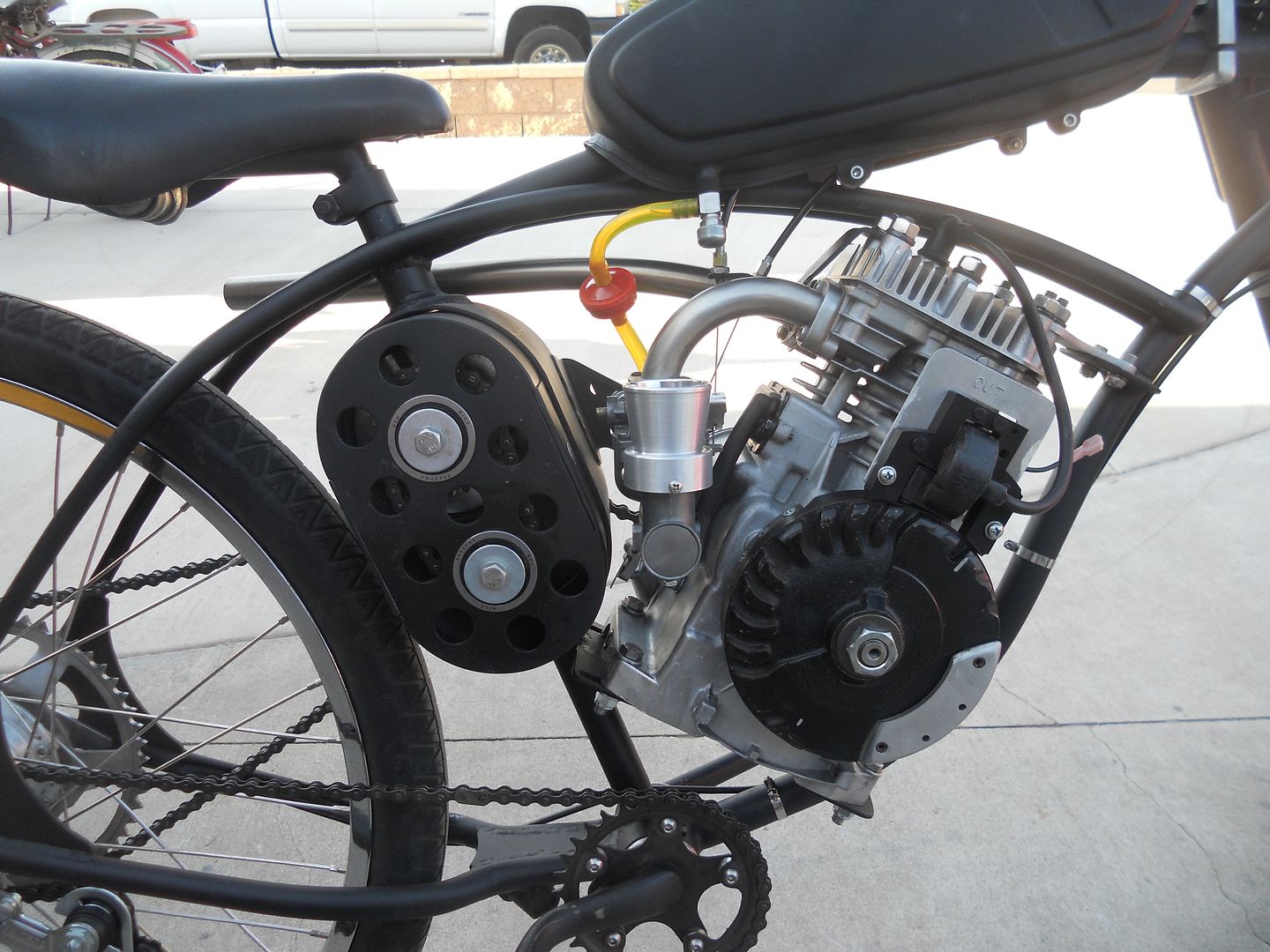Yes the upper shaft represents the engine crankshaft as they turn together all the time with a little gear reduction. The lower shaft turns with the rear wheel. So when I pedal the bike (while holding the compression release lever} the lower shaft starting sprocket locks up on the shaft and turns the upper shaft and the motor until it starts. When it starts, the rpms of the engine override the starting sprag letting it idle, moving or not. So that's the starting circuit. Next to get going, I rev the motor and it turns the upper shaft which has a clutch on it inside the tranny. At a certain rpm the clutch locks up and turns a larger sprocket on the lower shaft that is mounted on a sprag (one way} bearing, and it turns the rear wheel. The upper clutch has two sprockets on it, one that is turning the low speed and the other turns another standard clutch on the lower shaft. The lower clutch just spins without locking up until a higher rpm is reached at which time it engages a high speed sprocket that overrides the low speed sprocket and shifts into high gear. It sounds very complicated but is really simple and efficient. So the bike winds out in first up to around 3800 rpms (30-35mph) and shifts into second and goes on up to 5000 rpm or so (50+mph). I was so used to having just one clutch and whatever speed I could get from the motor that when I installed the two speed tranny it's a whole new world. These old lawnmower motors are capable of a lot more than they were designed for.





